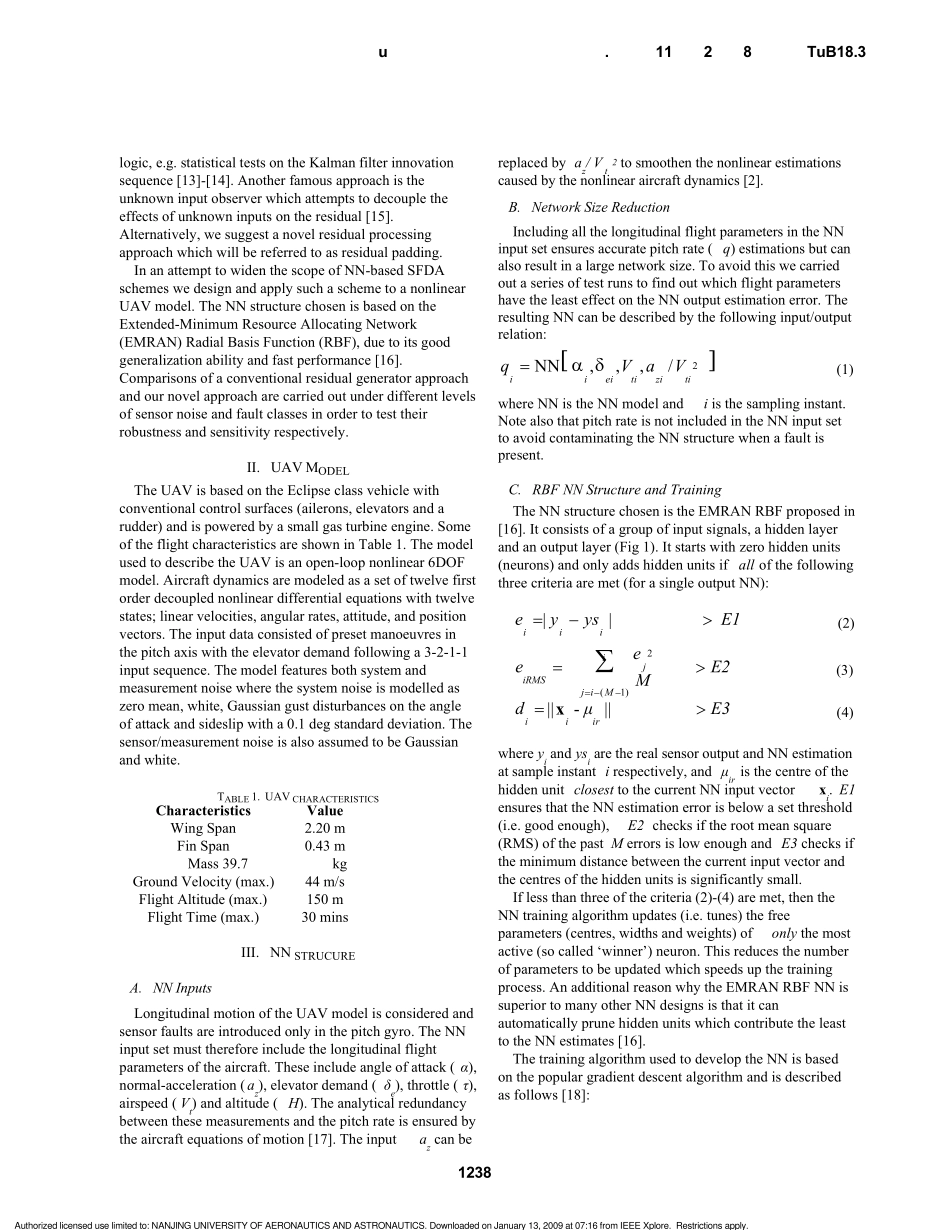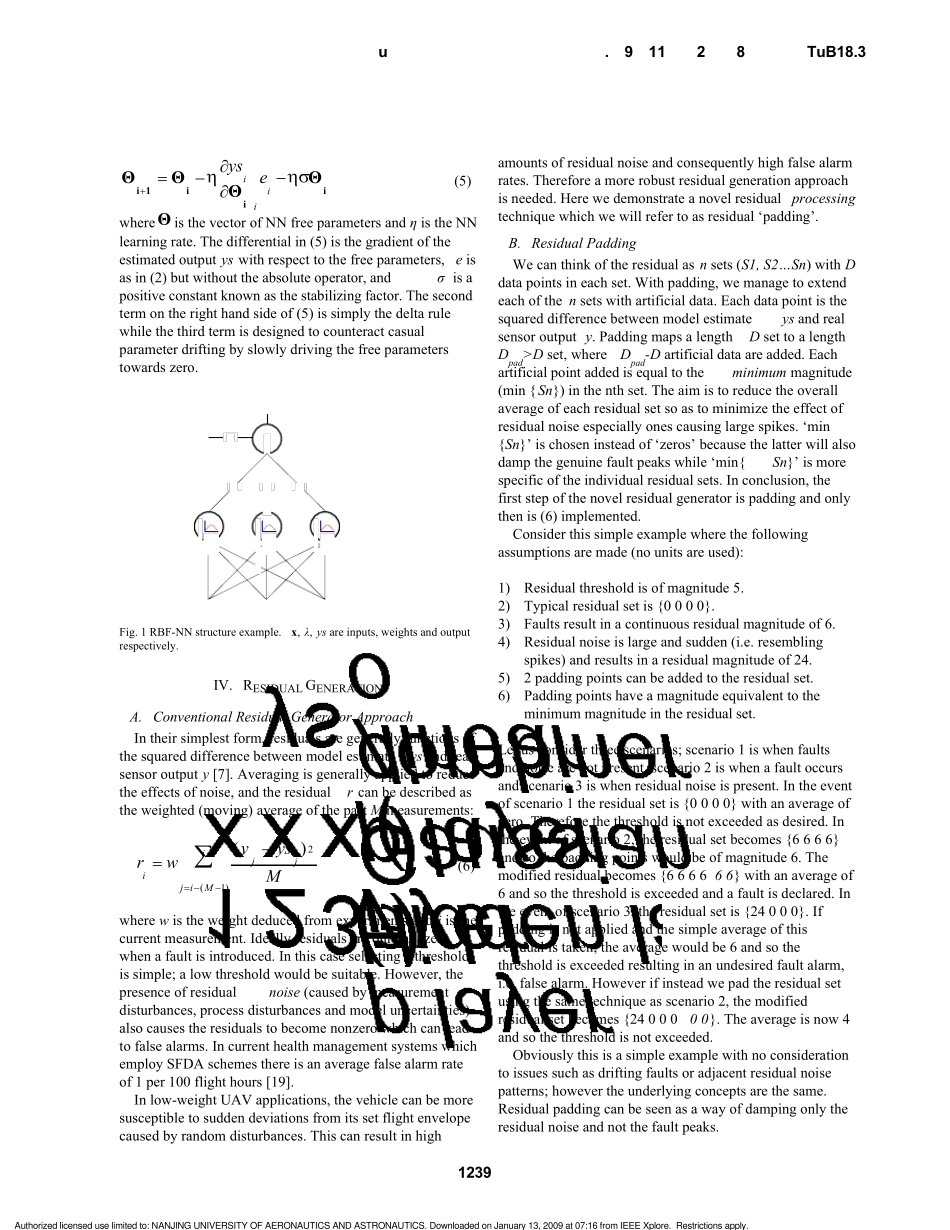Abstract— Nowadays model-based fault detection and isolation (FDI) systems have become a crucial step towards autonomy in aerospace engineering. However few publications consider FDI applications to unmanned air vehicles (UAV) where full-autonomy is obligatory. In this paper we demonstrate a sensor fault detection and accommodation (SFDA) system, which makes use of analytical redundancy between flight parameters, on a UAV model. A Radial-Basis Function (RBF) neural network (NN) trained online with Extended Minimum Resource Allocating Network (EMRAN) algorithms is chosen for modelling purposes due to its ability to adapt well to nonlinear environments while maintaining high computational speeds. Furthermore, in an attempt to reduce false alarms (FA) and missed faults (MF) in current SFDA systems, we introduce a novel residual generator. After 47 minutes (CPU running time) of NN offline training, the SFDA scheme is able to detect additive and constant bias sensor faults with zero FA and MF. It also shows good global approximation capabilities, essential for fault accommodation, with an average pitch gyro estimation error of 0.0075 rad/s. I. INTRODUCTION AULT tolerant flight control systems (FTFCS) can be found in many air-vehicles nowadays. Their purpose is to detect, identify, and accommodate for any type of failure that may occur on-board the vehicle. In fact, studies on the causalities by the US Air Force during the Vietnam War have revealed that upto 70% of aircraft losses could have been avoided if FTFCS were properly designed and implemented [1]. The two recognized classes of critical faults are sensor and actuator failures. In this paper we focus on sensor failures in an unmanned air vehicle (UAV)....


